Different Styles
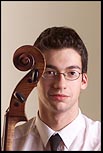
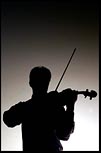

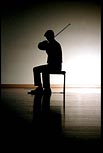 The way that an image is destined to be used dictates how you shoot it. This example talks about the difference in approach to shooting what is essentially the same subject, but for two different uses. I went to this southwest London school to shoot a “fly on the wall” documentary article about a music project to fill a couple of pages in a tabloid sized magazine.
The way that an image is destined to be used dictates how you shoot it. This example talks about the difference in approach to shooting what is essentially the same subject, but for two different uses. I went to this southwest London school to shoot a “fly on the wall” documentary article about a music project to fill a couple of pages in a tabloid sized magazine.
The journalist commissioned to write about the project arrived well before me because I had been delayed shooting an urgent news job. By the time I arrived the workshops with three professional musicians and the composer of the piece they were working on were well under way. I had a quick word with the writer and got on with shooting the pictures. I hadn’t missed anything that wasn’t going to happen again so I relaxed and worked on shooting images that I knew would fit into the style of those pages.
Some of the photographs were lit with Lumedyne lights, but most were either available light (400 ISO) or used one or more Canon 550ex speedlites triggered with a Canon ST-E2 transmitter. Within the two hours remaining I had completely covered the project, it’s key personnel and I was really confident that I had filled my brief so I went home to edit the pictures. I sent twelve images back to the picture desk by dial up ISDN connection.
These four pictures represent different ways of shooting, a range of techniques that the news photographer needs to be able to switch between quickly and easily. The first image on the left was purely available light in a room with some daylight, several sodium floodlights and a number of tungsten spotlights. This required custom white balancing at 400 ISO and an exposure of 1/60th of a second at f2.8 (Canon 70-200f2.8L lens).
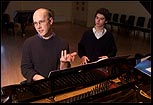
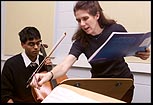
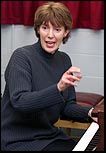 At 200 ISO the exposure was 1/45th of a second at f4.5 on a preset flash white balance (Canon 17-35 f2.8L). The third picture is just bounced flash off of a low ceiling in a room so small and dark that little else was possible without totally disrupting the session. 1/125th of a second at f5.6 (Canon 17-35 f2.8L). The fourth image was in a fluorescent lit room, with the camera on fluorescent light balance using a Canon 550ex on camera set to -1 1/2 stops filling in with a green Sto-fen Omni-bounce 1/45th of a second at f4 at 400 ISO (Canon 28-70 f2.8L).
At 200 ISO the exposure was 1/45th of a second at f4.5 on a preset flash white balance (Canon 17-35 f2.8L). The third picture is just bounced flash off of a low ceiling in a room so small and dark that little else was possible without totally disrupting the session. 1/125th of a second at f5.6 (Canon 17-35 f2.8L). The fourth image was in a fluorescent lit room, with the camera on fluorescent light balance using a Canon 550ex on camera set to -1 1/2 stops filling in with a green Sto-fen Omni-bounce 1/45th of a second at f4 at 400 ISO (Canon 28-70 f2.8L).
The story ended up being promoted to the front page so I had to go back and make a really graphical front page image. Following discussions with the picture editor, the designer and the sub-editor I had a strong idea what they were looking for. We had looked at examples of how similar subject matter had been handled before and we decided on a few variations to try. The fly in the ointment was that it was the last day of term by now and I only had about half an hour to shoot the job.
Two very different styles and an illustration of the Opinion piece about the difference between making and taking pictures. The inside spaces in the magazine allow a far more news photographeric “fly on the wall” approach compared to the very simple, lit and structured style of the cover shoot. Those amongst you who follow these technique pages will recognize the silhouette concept and the way those images were shot was very similar to the technique I described there. The other “well lit” images used my Lumedyne units, one set to 200 joules inside a 100cm Chimera softbox with the inner diffuser in place and another lighting the background set to 50 joules.
This wasn’t a studio, but it was a fantastic concert rehearsal space that had as much room as I wanted – a rare luxury for me. I had to allow for the Logo (top left) and a range of cover lines which could be fitted in around the image. The third image (bottom right) actually made the cover, pretty much un-cropped with the logo sitting out from the background in yellow. Knowing what you are shooting for helps in so many ways that even if you are shooting for fun I think you should always have the end use in mind, even if it’s a fictitious one.
